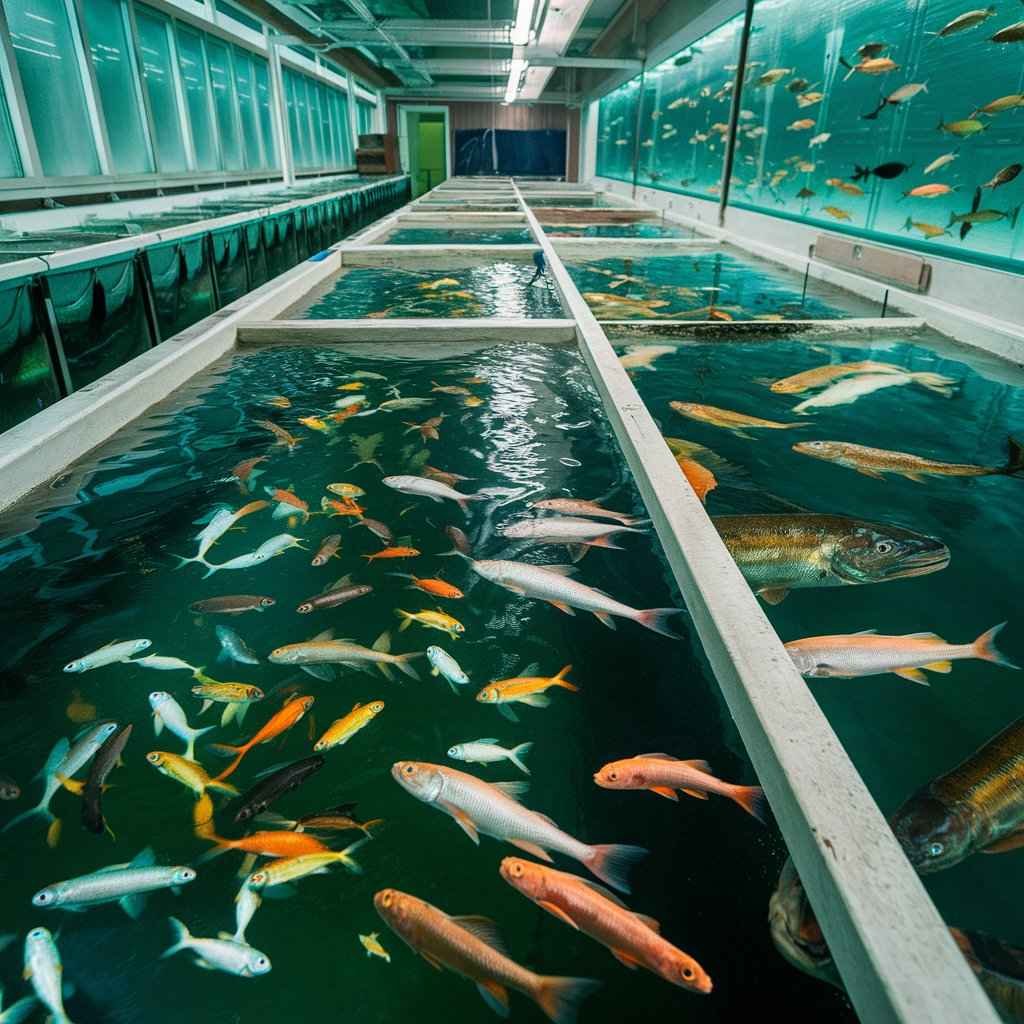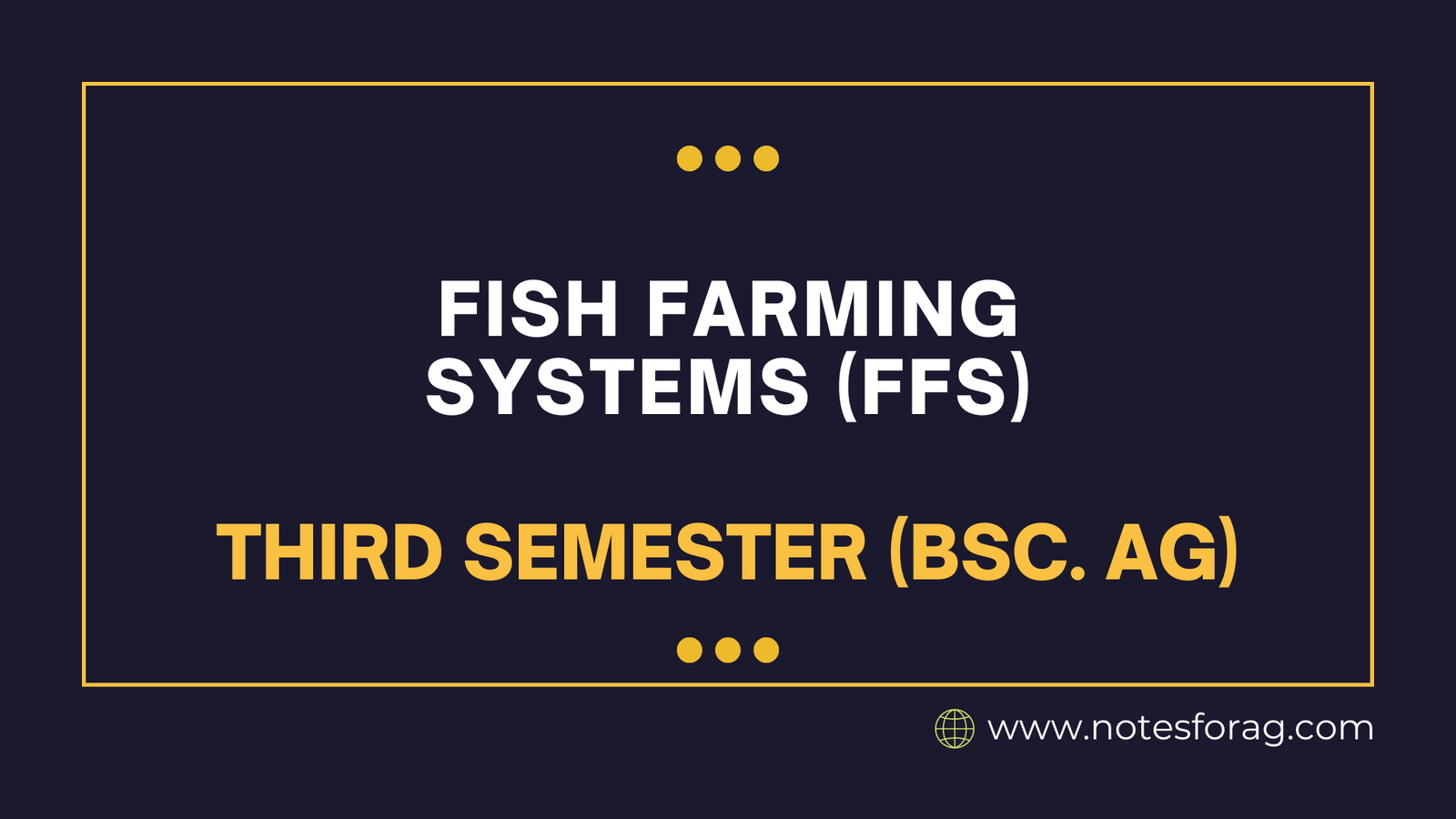Fish farming systems (FFS) refer to a number of approaches for raising fish in controlled conditions with the goal of maximizing production for commercial, subsistence, or recreational purposes. These systems regulate aspects such as water quality, diet, and breeding to promote healthy and efficient fish growth. Fish Farming Systems helps to ensure sustainable food production, economic development, and resource conservation by applying a variety of strategies and technology.
Table of Contents
Introduction to Fish Farming Systems
Fish farming Systems, commonly known as aquaculture, has become an essential component in meeting the world’s growing seafood demand. As global populations rise and wild fish stocks are overexploited, regulated raising of fish species in a variety of habitats provides a sustainable and efficient solution. This method involves growing aquatic organisms under controlled circumstances in freshwater, brackish water, and marine habitats.
The value of fish farming systems cannot be emphasized. They provide a consistent food source, increasing food security and providing economic benefits to communities worldwide. Aquaculture lessens pressure on wild fish populations by producing fish in a controlled environment, so contributing to the mitigation of the overfishing issue. This not only protects marine biodiversity, but also secures the long-term availability of fish.

Fish aquaculture is based on several key ideas. These include choosing the right species for farming, optimizing growth circumstances, and assuring the fish’s health and wellbeing. Ponds, tanks, cages, and recirculating aquaculture systems (RAS) are some of the fish farming techniques used, each with its own set of benefits and challenges. The type of system used is frequently determined by factors like as the species being farmed, the region, and the resources available.
The environmental benefits of fish farming are enormous. Sustainable aquaculture procedures can reduce habitat loss and water pollution when compared to traditional fishing methods. Furthermore, current fish farming techniques frequently combine waste management and water recycling technologies, which reduces environmental effect.
Classification of Fish Farming Systems
1. Based on Intensity
- Extensive systems: Use natural water bodies with little input. Fish depend on natural food sources. Low stocking numbers and low management are typical.
- Semi-Intensive System: Combine natural food and supplemental feeding. Moderate stocking levels and improved management efforts are common. Fertilizers may be used to increase natural productivity.
- Intensive systems: Rely totally on mechanical feeding and high levels of supervision. High stocking densities are maintained, and water quality is strictly monitored to promote growth and health.
2. Based on Enclosure
- Pond systems: Use earthen or lined ponds for fish culture. They are frequently utilized because they are easy to manage and suitable for a wide range of species.
- Cage Systems: Install cages in natural water bodies such as lakes, rivers, and oceans. This promotes better water exchange but necessitates protection from predators and environmental variations.
- Tank Systems: Use concrete or plastic tanks, which are commonly equipped with recirculating water systems. These are ideal for high-density farming and offer more control over water quality.
- Racetrack Systems: Consist of long, narrow channels with a constant flow of water. They are perfect for species that thrive in flowing water and support high-density production.
3. Based on Fish Species
- Monoculture: Cultivates a single species of fish, allowing for particular care and feeding procedures specific to that species’ needs.
- Polyculture: Raising numerous species in the same system, often selecting species that occupy various ecological niches, in order to maximize resource utilization and reduce waste.
4. Based on integration
- Integrated aquaculture: Combines fish farming with other agricultural activities, such as cattle and grain production. Examples include:
- Rice and Fish Farming: Fish are raised in rice paddies, benefiting from the flood conditions while also providing pest control and nutrient recycling for the rice.
- Agricultural Fish Farming: Integrates fish aquaculture with vegetable and fruit cultivation. Waste water from fish tanks can be used to irrigate and fertilize crops.
- Aquaponics: A sustainable technique that combines aquaculture (fish farming) and hydroponics (growing plants without soil). Fish waste feeds nutrients to plants, which help to filter water for fish, resulting in a closed-loop system.
Fish farming methods are classed according to the intensity of management and inputs, the type of enclosure utilized, the species cultivated, and their interaction with other agricultural activities. Each classification has distinct benefits and challenges, allowing farmers to select the best system for their needs, resources, and environmental conditions. Farmers can accomplish efficient, sustainable, and profitable aquaculture techniques by learning about and applying the proper fish farming system.
Frequently Asked Question(FAQ)
What is a fish farming system (FFS)?
A fish farming system (FFS) is a method of raising fish in controlled conditions to maximize productivity for commercial, subsistence, or recreational purposes. It include controlling water quality, feeding, and breeding to guarantee healthy and efficient fish growth.
Why are fish farming systems important?
Fish farming methods are critical for improving food security, boosting economic development, and encouraging sustainable resource use. They provide a consistent supply of protein and can be modified to a variety of environmental and economic circumstances.
Related Articles

